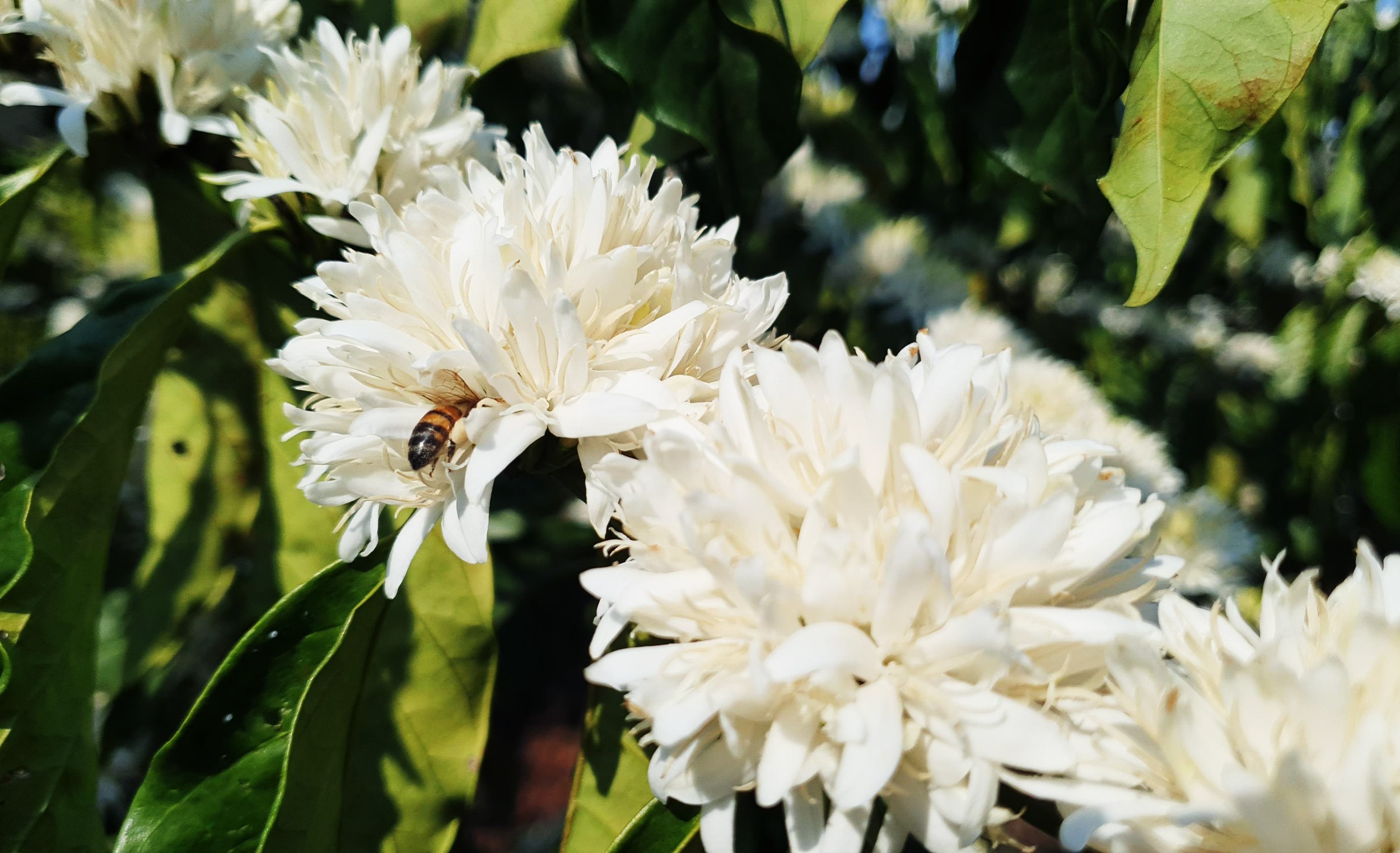Brazil not only dominates the world’s supply of arabica coffee, but it is also second only to Vietnam in production of Coffea canephora. Canephora is widely referred to by the common name robusta, but strictly speaking, robusta refers only to one specific strain of canephora. In Brazil, coffee growers are careful to distinguish between robusta and the other types of canephora, of which the most common is known in Brazil as conilon.
Unlike arabica, canephora is not self-fertile — it needs to be pollinated by genetically different trees in order to bear fruit. For this reason, it’s not practical to plant a single, stable variety of canephora on a coffee farm. Instead, farmers must plant several varieties in close proximity so that they can pollinate each other effectively. Coffee pollen is mostly carried from one plant to another by wind, although bees can significantly help with pollination (Klein et al 2003).
 Bees are important pollinators of C. canephora, which relies on pollen reaching genetically different plants in order to bear fruit. Photo courtesy of Renata Kelly da Silva/Embrapa
Bees are important pollinators of C. canephora, which relies on pollen reaching genetically different plants in order to bear fruit. Photo courtesy of Renata Kelly da Silva/Embrapa
Because canephora must be cross-pollinated to bear fruit, growing canephora from seed results in a range of genetically distinct plants which can have very different characteristics. Robusta and conilon are therefore not single, stable varieties, but groups of related varieties.
The only way to ensure a canephora variety’s traits are passed along is to clone it by taking cuttings. The clones are genetically identical and therefore represent a stable variety. The clonal variety must, however, be planted alongside a selection of different varieties in order to be pollinated and bear fruit.
Canephora was first identified as a separate species at the end of the nineteenth century. Robusta plants from the Belgian Congo (now Democratic Republic of the Congo) were brought to the Dutch East Indies in the early twentieth century,